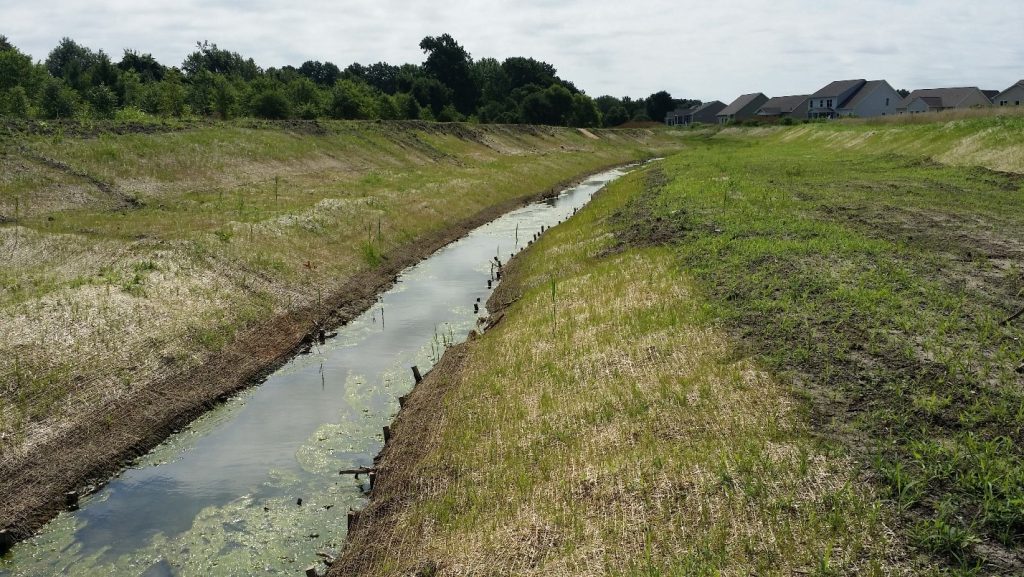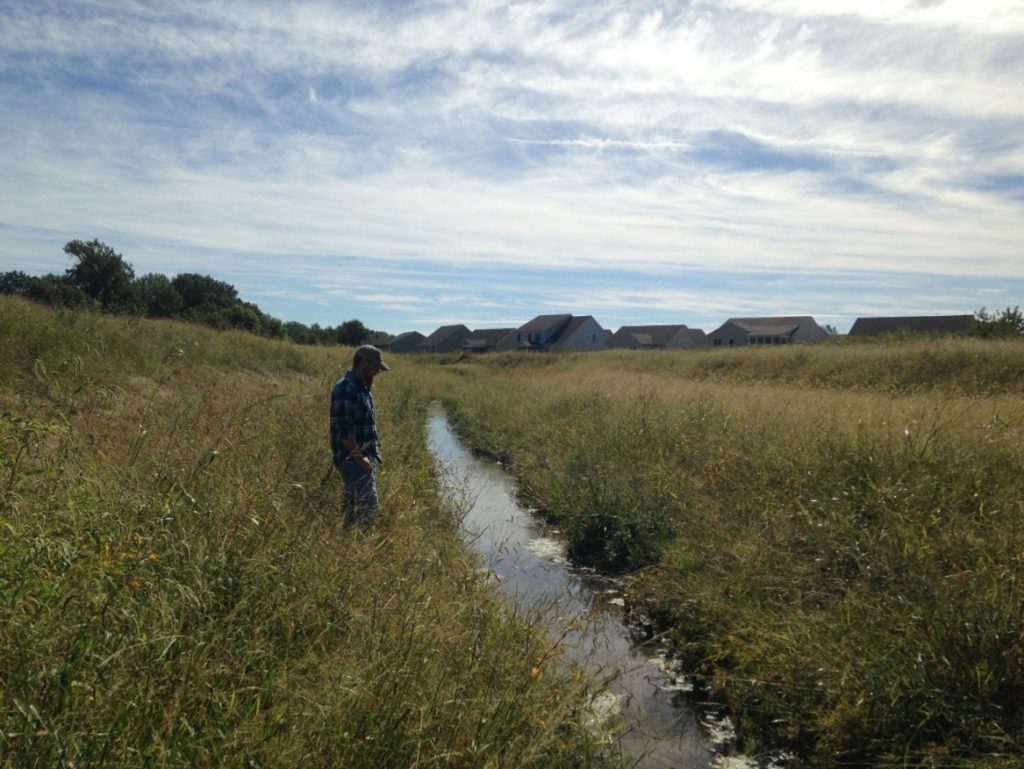
Facebook Twitter Instagram YouTube
Written on: September 26th, 2022 in Education and Outreach
By Ivette Clayton and Brittany Haywood, DNREC’s Tax Ditch Program
What is a Tax Ditch?
Did you know that there are 234 tax ditch organizations across the state of Delaware? They make up approximately 2,000 miles of channels across Kent, New Castle, and Sussex Counties. However, not all ditches are tax ditches.
A tax ditch is an organization that is a governmental subdivision of the state. It is watershed-based and formed and run by the landowners who live within it. Each organization is provided technical and administrative assistance by DNREC’s Tax Ditch Program and county conservation districts.
Tax ditch watersheds range in size from a small two-acre system to the largest 56,000 acre system. The design of a tax ditch varies with most having a “u” or “v” shape. Some are big and some are small, but all have a permanent right-of-way to allow access and disposal for maintenance activities. Visit de.gov/taxditchmap to see if your property has a tax ditch located near it!
Why Tax Ditches?
Just about everyone benefits, either directly or indirectly, from tax ditches. It equates to just over 100,000 people and almost one-half of the state-maintained roads. The best part, tax ditch organizations are set up so that the landowners within the watershed are the ones making maintenance decisions. Who knows the land better than the folks living right there?
It should be noted that to have a successful tax ditch organization and operational drainage, active participation by the landowners is required. Volunteer positions, such as the Chairman, Manager and Secretary-Treasurer, need to be voted in annually, and appropriate tax rates levied to the landowners to ensure proper maintenance can be conducted.
Are you interested in volunteering your time as an officer? First, you have to be a landowner within the tax ditch organization you are interested in participating with. Second, reach out to our office at DNREC_Drainage@delaware.gov, and we’ll get back to you with more information!
Changing Environment, Changing Designs
Most of Delaware is flat with a high-water table so tax ditches were created to assist in moving normal water flows off lands. Most tax ditches were created from 1950 to the late 1980s, and land use has greatly changed since then. To account for this land use change, to have more resilient ditches, and to improve the health of our waters, tax ditch design changes are occurring.
Floodplain Benches
Floodplain or bankfull benches are becoming a method to address erosion issues and improve the stability of tax ditches. Instead of being a “u” or “v” shape, it opens the slope of the tax ditch channel. This nature-inspired design allows the ditch to hold larger volumes of water while maintaining the integrity of the bank. The shallower channel reduces the water’s velocity. A slower current deters the water from acting like a knife and cutting deep into the land, eroding the banks away. Slower water flow also allows sediment to settle out of the water, improving water clarity and quality.
Design updates to tax ditches like this improve wetlands and water quality but do require adjustments to the Right-of-Ways (ROWs) that run along side the tax ditches, as well as other properties in the watershed. By expanding the width of the tax ditch, it pushes the ROWs further into the adjacent land. This can cause changes on the land used and requires coordination with landowners.
Below is a cross-section of a tax ditch without and with a floodplain bench.
Below is an example of a floodplain bench that was installed in the Hudson Road Tax Ditch.



DNREC’s Drainage Program’s hope to help tax ditch organizations plan and construct stream restoration projects like this one to address maintenance issues in the future.